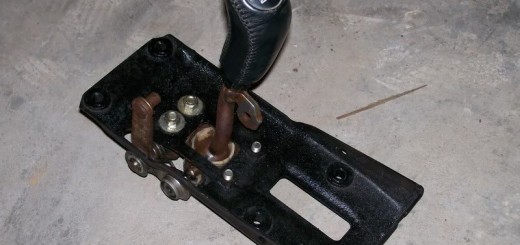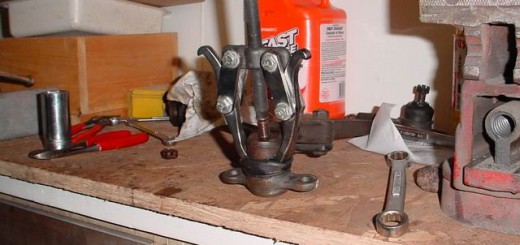Reason
The water injection setup originally used two pressure switches to turn on two solenoids at different boost pressures. In order to have better control over the turn on point, I decided that it would be best to use an electronic switch to control the two solenoids. By doing this I could also have the added benefit of three different flow settings from the same two solenoids. The controller uses an LM339n quad comparator and three potentiometers to set three different ‘turn on’ points for the two solenoids. The first potentiometer sets at what voltage (and hence boost) the first solenoid will turn on. The second potentiometer sets the boost pressure where the second solenoid will turn on, and also where the first solenoid will turn off. Finally, the third potentiometer sets the boost pressure where both solenoids will turn on. Currently, I have the first solenoid connected to a 5 gallon per hour nozzle, and the second solenoid connected to a 10 gallon per hour nozzle. Flow rates will then be:
1st potentiometer setting: 5 gallons per hour (315cc/min)
2nd potentiometer setting: 10 gallons per hour (630cc/min)
3rd potentiometer setting: 15 gallons per hour (946cc/min)
Note that the above flow rates are assuming 100psi of pressure at the nozzle and does not take into account boost pressure (ie differential pressure between pump pressure and boost). More information on the water injection setup can be found here.
Construction
The components to build up the water injection controller consist of the following items and were all purchased at Radio Shack.
-
(1) LM339n Quad Comparator
-
(3) 1k ohm resistors
-
(4) 10k ohm resistors
-
(1) general purpose diode
-
(1) 5 volt regulator
-
(3) IRF 510 MOSFETs
-
(3) 10k ohm potentiometers
-
(2) 22uF capacitors
-
(1) Prototype board
-
(1) Project box
-
Wire wrap tools, wire, and 14pin wire wrap style socket for the LM339n comparator
-
(4) Potentiometer knobs (only need three, but they come in packs of two).
Basic schematic of the controller:

The following picture is the completed controller board. The bottom three devices are the three FETs used to turn on and off the solenoids. The top left device is the 5 volt regulator – a really nice device that takes any input between some 9volts and 36 volts and makes a rock solid 5.0volts. Towards the middle of the board are the four 10k ohm resistors and towards the top right are the three 1k ohm resistors. Toward the top right of the board is where the diode is located, and below that is the LM339n quad comparator. Difficult to see in the picture are two 22 micro farad capacitors. One is tied between the output of the 5 volt regulator and ground, and the other is tied between Vcc and Gnd on the comparator chip. These should suppress some noise in the power source of the controller.

Operation
The circuit consists of four simple comparator circuits. Comparators 1, 2, and 4 simply give a voltage to the gate of their respective IRF510 MOSFET so that it will start to conduct. This then supplies the load (solenoid) with a ground, completing the circuit. The third comparator is tied in with the 2nd, so that when the 2nd comparator turns on, the third will also turn on. The third comparator, however, doesn’t supply a positive voltage, it supplies ground instead and is connected to the output of comparator 1. This causes the voltage seen at the gate of MOSFET 1 to be 0, and hence turns off the first solenoid. When comparator 4 turns on, it turns on MOSFET 3, which turns on solenoid 1.
The 5 volt regulator was used because the boost signal is a 0 to 5 volt signal, and using the +12v battery for the potentiometers would prove inaccurate since this voltage can vary significantly.
Inputs to the controller are:
-
Boost signal (0-5 volts with increasing voltage indicating more boost). I used the signal from the APEXi AFC-R electronic boost controller, but the stock signal could be used as well.
-
+12V switched with the ignition
-
Ground
Outputs are:
-
Solenoid 1 ground
-
Solenoid 2 ground
The solenoids share a common +12 volts ignition switched power supply.
To set the three potentiometers, I set the #2 and #3 potentiometers to their highest setting (ie big boost to turn them on). With the engine off and the ignition on, I set the #1 potentiometer just a little above atmospheric pressure. Then went for a drive and set the other two, doing trial runs to get the settings right. It involved adjusting the potentiometer, running under boost and seeing where the turn on point is via LEDs that come on with the solenoids. I set the first solenoid to come on at about 3psi of boost, the second solenoid (and first off) to come on at about 10psi of boost, and both solenoids to turn on at about 15psi of boost. In watching the LEDs while driving, once the second stage is hit, the third stage comes on so quick that it’s easy to miss. In these couple videos (1: WMV format, MPG format, 2: WMV format, MPG format) you can see the first stage come on (red LED), then the second (greed LED) and third follow so rapidly that the red LED just seems to just dim out for a second during the very short time the second stage is active.
Completed Water Injection Controller Box


I used Velcro to install the controller box behind the drivers seat.



Other Uses
The controller box could be used for a many other electric items that are desired to be switched with a rising input signal (voltage) from 0 to 5Volts. The IRF510 MOSFETs can support 5.6amps of continuous current and 20amps of pulsed current. Other uses could include:
-
Staged Nitrous Oxide solenoids based on boost pressure or throttle position.
-
Staged fans (of 5.6amps or less) using a temperature voltage signal. The fans could be configured to have either the 1st or both fans on by only adjusting the 1st and 3rd potentiometers.
-
Intercooler misting solenoid(s)/pump based on throttle position or boost pressure.
-
Anything else you want to turn on/off with rising throttle position, boost, or any 0-5 volt signal.
This documentation in no way replaces the Toyota MR2 Repair Manuals. The purpose of this content is only to provide supplementary information to fellow MR2 enthusiasts. Midship Runabout and its contributing authors will not be held responsible for any injury or damages that may occur as the result of practicing any of the methods or procedures described within this website. Article and photo submissions are property of the contributing author.





